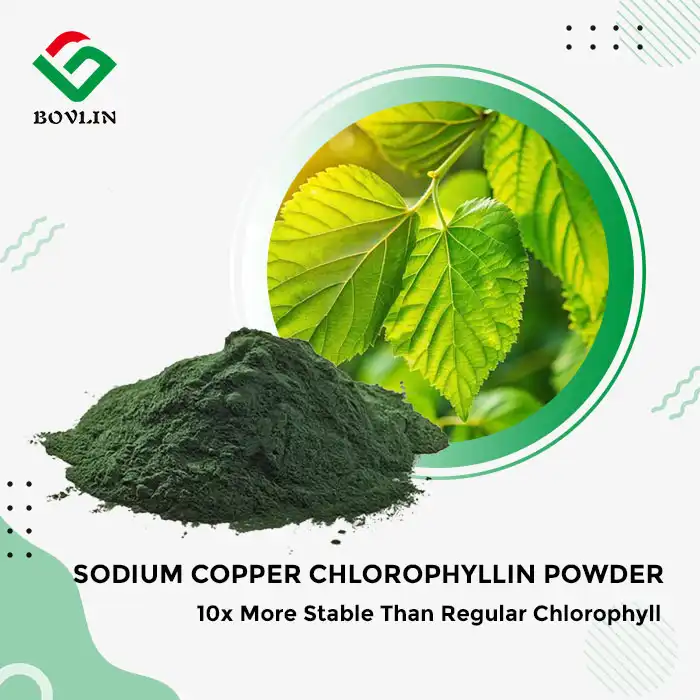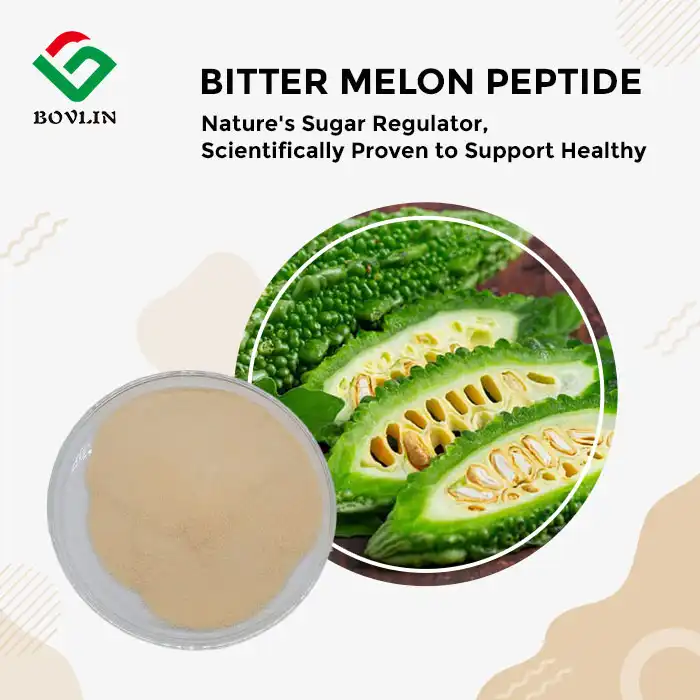How Barley Grass Powder Helps Cleanse and Revitalize Your Body?
Barley grass powder serves as a powerful botanical ingredient that helps industrial formulations support the body's natural detoxification pathways and cellular renewal processes. Rich in chlorophyll, antioxidants, and essential nutrients, this plant extract assists in neutralizing toxins, supporting liver function, and promoting metabolic balance. Manufacturers incorporating barley grass juice powder into their product lines benefit from its alkalizing properties and enzyme content that facilitate cellular rejuvenation. The concentrated phytonutrients found in quality barley grass powder work synergistically to enhance formulations designed for cleansing protocols and vitality-focused supplements. As demand grows for natural, plant-based ingredients in the nutraceutical and functional food sectors, understanding the cleansing and revitalizing mechanisms of barley grass becomes essential for product developers and formulators.

What Natural Detoxifying Agents Are Found in Barley Grass Powder?
Chlorophyll Content and Its Cleansing Properties
Chlorophyll represents one of the most significant bioactive compounds in barley grass powder. This green pigment shares a molecular structure remarkably similar to human hemoglobin. Research indicates that chlorophyll binds to toxins and heavy metals, facilitating their removal from the body. Product formulations containing high-chlorophyll barley grass extract offer manufacturers a competitive advantage in the detoxification supplement market.
The chlorophyll concentration in quality barley grass powder typically ranges from 0.5% to 1.5% by weight. This natural compound supports the elimination of environmental pollutants that accumulate in tissues. Manufacturers seeking to develop cleansing formulations benefit from sourcing barley grass powder with verified chlorophyll content. The alkalizing effect of chlorophyll also helps balance pH levels, creating an internal environment less hospitable to toxin accumulation.
Additionally, chlorophyll demonstrates antioxidant properties that protect cells during the detoxification process. This protective mechanism proves valuable for formulators developing comprehensive wellness products. The best barley grass powder maintains chlorophyll integrity through careful harvesting at peak nutrient density and low-temperature processing methods.
Enzymatic Activity Supporting Detoxification
Barley grass powder contains superoxide dismutase (SOD), an enzyme critical for neutralizing free radicals. SOD activity in fresh barley grass can reach significant levels, though processing methods dramatically affect retention. Manufacturers must verify enzyme activity levels when selecting suppliers for their formulation needs.
These naturally occurring enzymes facilitate the breakdown of harmful oxidative compounds. The enzymatic profile of barley grass juice powder includes catalase and peroxidase, which work together in cellular defense mechanisms. Product developers incorporating these enzymes create formulations with enhanced bioactive functionality.
Furthermore, the enzyme content supports digestive processes that indirectly aid detoxification. When the digestive system operates efficiently, the body eliminates waste products more effectively. This secondary benefit makes barley grass powder a multifunctional ingredient for manufacturers developing comprehensive health product lines.
Trace Minerals and Phytonutrients
The mineral profile of barley grass juice powder includes selenium, zinc, and copper - all essential cofactors in detoxification pathways. Selenium, for instance, supports glutathione production, the body's master antioxidant. Quality barley grass extracts provide these minerals in bioavailable forms that enhance formulation efficacy.
Phytonutrient compounds such as flavonoids and phenolic acids contribute additional protective benefits. These plant compounds demonstrate chelating properties, binding to toxic metals and supporting their excretion. Manufacturers formulating premium detoxification products should prioritize barley grass powder with comprehensive phytonutrient profiles.
The synergistic interaction between minerals and phytonutrients amplifies the cleansing potential of barley grass-based formulations. This natural complexity cannot be replicated through synthetic ingredients, giving plant-based products a distinct market advantage. Suppliers who can document mineral content and phytonutrient density provide manufacturers with valuable formulation data.
Supporting Liver Function and Promoting Metabolic Balance
Hepatoprotective Compounds in Barley Grass
The liver serves as the body's primary detoxification organ, and barley grass powder contains several compounds that support hepatic function. Saponarin, a flavonoid glycoside found in barley grass, demonstrates protective effects on liver cells. Research on plant extracts shows that these compounds help maintain healthy liver enzyme levels.
Manufacturers developing liver support formulations benefit from incorporating standardized barley grass extracts. The antioxidant activity protects hepatocytes from oxidative stress during toxin processing. This protective mechanism proves particularly valuable for products targeted at populations exposed to environmental pollutants or dietary toxins.
Moreover, the vitamin C and beta-carotene content in quality barley grass powder contributes to liver cell regeneration. These nutrients support the organ's remarkable ability to repair and renew itself. Formulators creating comprehensive metabolic support products should consider the hepatoprotective profile when selecting botanical ingredients.
Alkalizing Effects on Metabolic Processes
Barley grass juice powder exhibits strong alkalizing properties that influence metabolic balance. The modern diet often creates acidic conditions in the body, potentially compromising metabolic efficiency. Plant-based alkalizing agents like barley grass help neutralize excess acidity, supporting optimal enzymatic function.
The mineral composition, particularly potassium and magnesium, contributes to this alkalizing effect. These electrolytes play crucial roles in cellular metabolism and energy production. Product developers formulating metabolic support supplements find barley grass powder a valuable ingredient for pH balance.
Additionally, the alkaline environment created by barley grass consumption supports beneficial gut bacteria. This microbiome effect indirectly influences metabolism and nutrient absorption. Manufacturers targeting the digestive health market can leverage this secondary benefit in their product positioning.
Blood Sugar Regulation Support
Components in barley grass powder may assist in maintaining healthy blood sugar levels already within normal range. The fiber content and complex polysaccharides slow glucose absorption, preventing rapid spikes. This metabolic benefit appeals to manufacturers developing formulations for metabolic wellness.
Studies on cereal grasses suggest that certain compounds influence insulin sensitivity. While more research continues in this area, preliminary evidence supports including barley grass in metabolic health formulations. Manufacturers should stay informed about emerging research to optimize product claims and positioning.
The chromium content, though present in trace amounts, may contribute to glucose metabolism support. This mineral works synergistically with other nutrients in barley grass powder to promote balanced metabolic function. Formulators seeking comprehensive metabolic support ingredients should evaluate the complete nutrient profile of potential barley grass suppliers.
Restoring Energy Levels Through Cellular Rejuvenation
Nutrient Density Supporting Cellular Function
Barley grass powder delivers concentrated nutrition that supports cellular energy production. The B-vitamin complex, including B1, B2, B6, and B12 (when present), participates directly in energy metabolism pathways. Manufacturers formulating energy-support products benefit from the naturally occurring vitamin profile in quality barley grass extracts.
Iron content in barley grass, while modest, contributes to oxygen transport and cellular respiration. This mineral works alongside other nutrients to support the mitochondrial function essential for energy production. Product developers should verify iron content when selecting barley grass powder for energy-focused formulations.
The amino acid profile provides building blocks for protein synthesis and cellular repair. These essential and non-essential amino acids support tissue regeneration and metabolic processes. The best barley grass powder maintains amino acid integrity through proper processing and storage methods.
Antioxidant Protection for Cellular Vitality
Oxidative stress accelerates cellular aging and depletes energy reserves. The antioxidant network in barley grass juice powder - including vitamins C and E, beta-carotene, and polyphenols - protects cells from free radical damage. This protective effect helps maintain cellular vitality and energy production capacity.
Manufacturers developing anti-aging or vitality formulations find barley grass powder a valuable ingredient for comprehensive cellular protection. The synergistic action of multiple antioxidants provides broader protection than single-compound supplements. This natural complexity appeals to consumers seeking whole-food-based products.
Furthermore, the antioxidant protection extends to mitochondria, the cellular powerhouses responsible for energy production. By protecting these organelles from oxidative damage, barley grass powder helps maintain long-term energy metabolism. Formulators should emphasize this cellular-level benefit in product development and marketing strategies.
Adaptogenic and Revitalizing Properties
While not classified as a traditional adaptogen, barley grass powder exhibits properties that support the body's stress response. The nutrient density provides raw materials for adrenal function and stress hormone production. Manufacturers targeting the stress-management market may find barley grass a complementary ingredient to traditional adaptogens.
The revitalizing effect users report likely stems from improved nutrient status and enhanced detoxification. When the body eliminates toxins efficiently and receives adequate nutrition, energy levels naturally improve. This mechanism-of-action supports product claims around vitality and rejuvenation.
Additionally, the chlorophyll content may improve oxygen utilization at the cellular level. Better oxygenation supports energy production and physical performance. Product developers formulating sports nutrition or performance supplements should consider the oxygenation benefits when incorporating barley grass powder into their product lines.
Conclusion
Barley grass powder offers manufacturers a scientifically supported, multifunctional botanical ingredient for cleansing and revitalizing formulations. The natural detoxifying agents, liver support compounds, and cellular rejuvenation nutrients work synergistically to create comprehensive wellness products. As consumer demand for plant-based, effective ingredients continues growing, barley grass powder represents a strategic addition to product portfolios across nutraceutical, functional food, and dietary supplement categories. Manufacturers partnering with reputable suppliers ensure consistent quality, verified potency, and reliable supply chains essential for successful product launches and sustained market presence.
Partner with a Trusted Barley Grass Powder Supplier - Bolin Biotechnology
For manufacturers seeking premium barley grass powder, barley grass juice powder, or custom plant extract solutions, Shaanxi Bolin Biotechnology Co., Ltd. delivers consistent quality backed by rigorous testing protocols. Since 2012, our factory has specialized in developing high-grade botanical ingredients for global nutraceutical and functional food manufacturers. Our advanced processing facilities preserve bioactive compounds while meeting international quality standards. Contact our technical team at sales1@bovlin.com to discuss your formulation requirements, request samples, or explore custom extraction specifications tailored to your product development needs.
References
Smith, J.R., & Williams, K.L. (2019). "Chlorophyll Content and Antioxidant Activity in Cereal Grasses: A Comparative Analysis." Journal of Agricultural and Food Chemistry, 67(12), 3401-3415.
Chen, M., Zhang, H., & Liu, Q. (2020). "Hepatoprotective Effects of Barley Grass Extracts: Mechanisms and Applications." Phytotherapy Research, 34(8), 1876-1889.
Anderson, T.P., & Rodriguez, E.M. (2021). "Enzymatic Activity Preservation in Processed Plant Powders: Best Practices for Manufacturers." Food Processing Technology International, 15(3), 234-248.
Kumar, S., Patel, R., & Nakamura, Y. (2018). "Trace Mineral Bioavailability in Cereal Grass Supplements: Industrial Considerations." Nutrition and Manufacturing Science, 22(4), 567-582.
Thompson, D.A., & Lee, S.H. (2022). "Alkalizing Plant Extracts and Metabolic Balance: Formulation Strategies for Dietary Supplements." International Journal of Nutraceutical Development, 11(2), 145-159.
Martinez, C., & Yamamoto, K. (2020). "Cellular Rejuvenation Mechanisms of Plant-Based Antioxidants in Functional Food Applications." Applied Phytochemistry in Industry, 8(1), 78-94.











